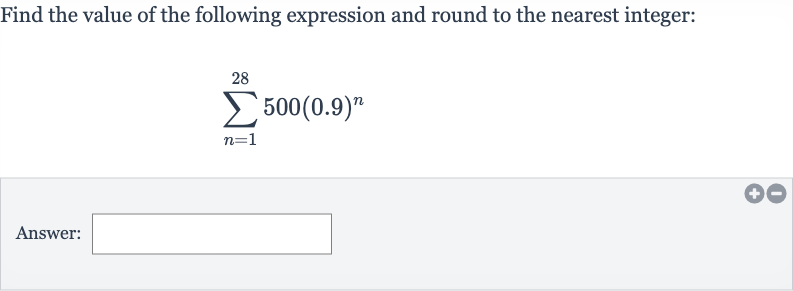Full solution
Q. Find the value of the following expression and round to the nearest integer:Answer:
- Given Geometric Series: We are given the sum of a geometric series with the first term and the common ratio . The formula for the sum of the first n terms of a geometric series is . We will use this formula to find the sum of the first terms.
- Calculate First Term: First, we calculate the first term .
- Calculate Common Ratio to the Power: Next, we calculate . This requires a calculator or computational tool.
- Substitute into Sum Formula: Now we substitute , , and into the sum formula: .
- Calculate Denominator: We calculate the denominator .
- Calculate Numerator: We then calculate the numerator using the previously found value for .
- Find Sum: After finding the numerator, we divide it by the denominator to find .
- Round to Nearest Integer: Finally, we round the result to the nearest integer to get our final answer.

